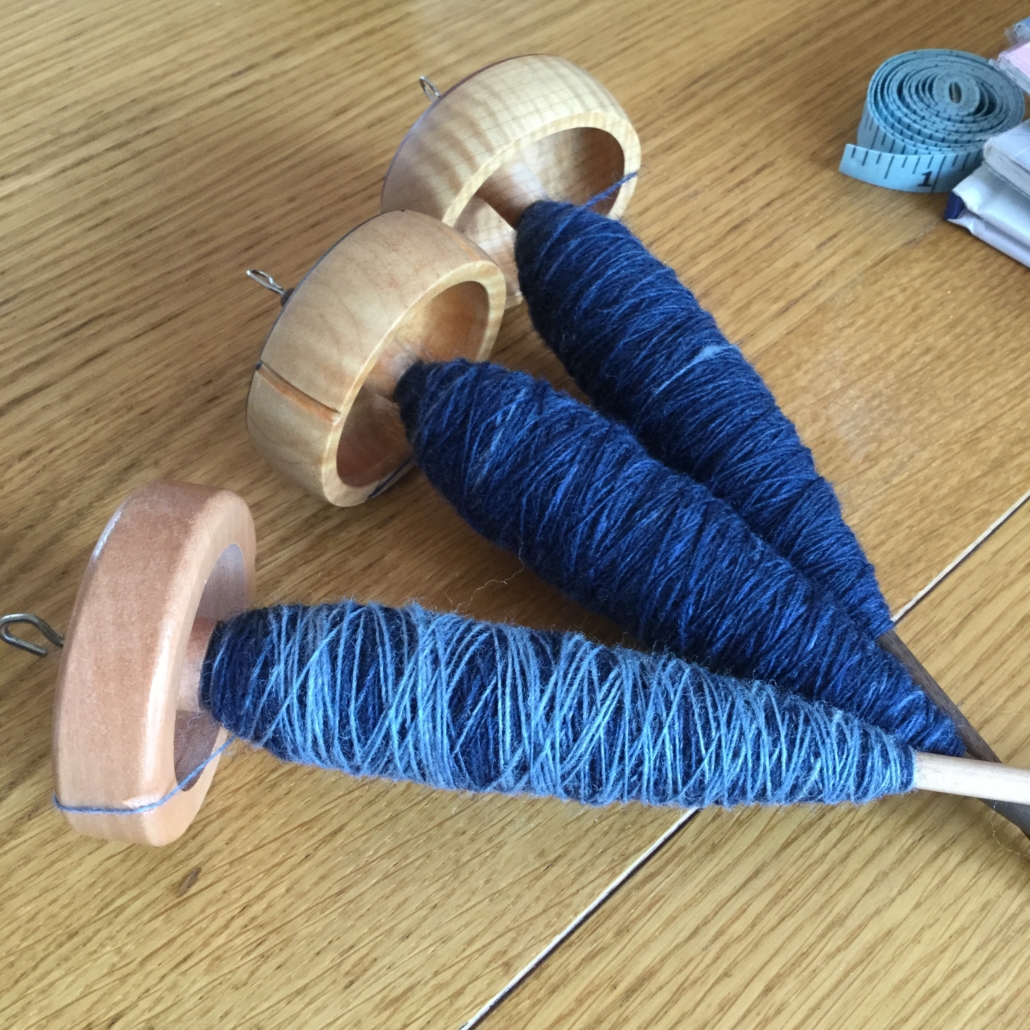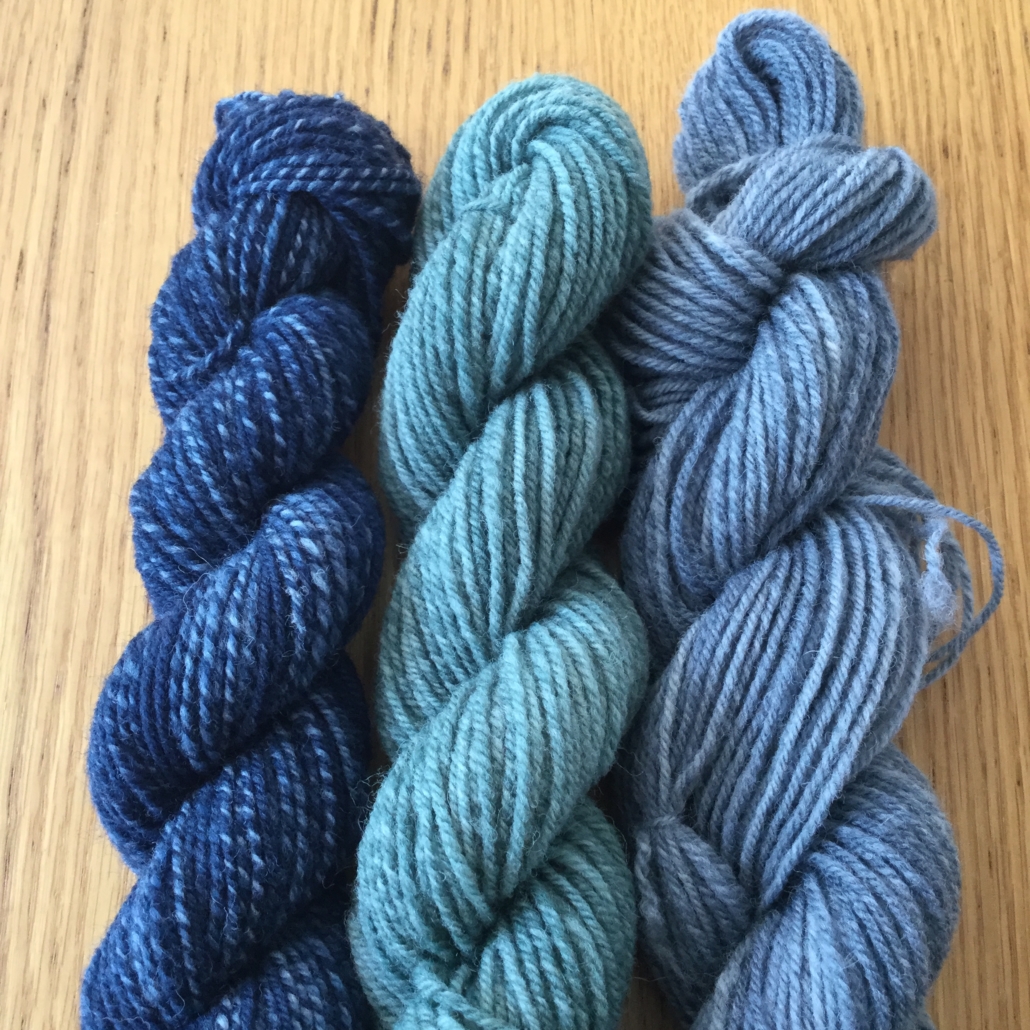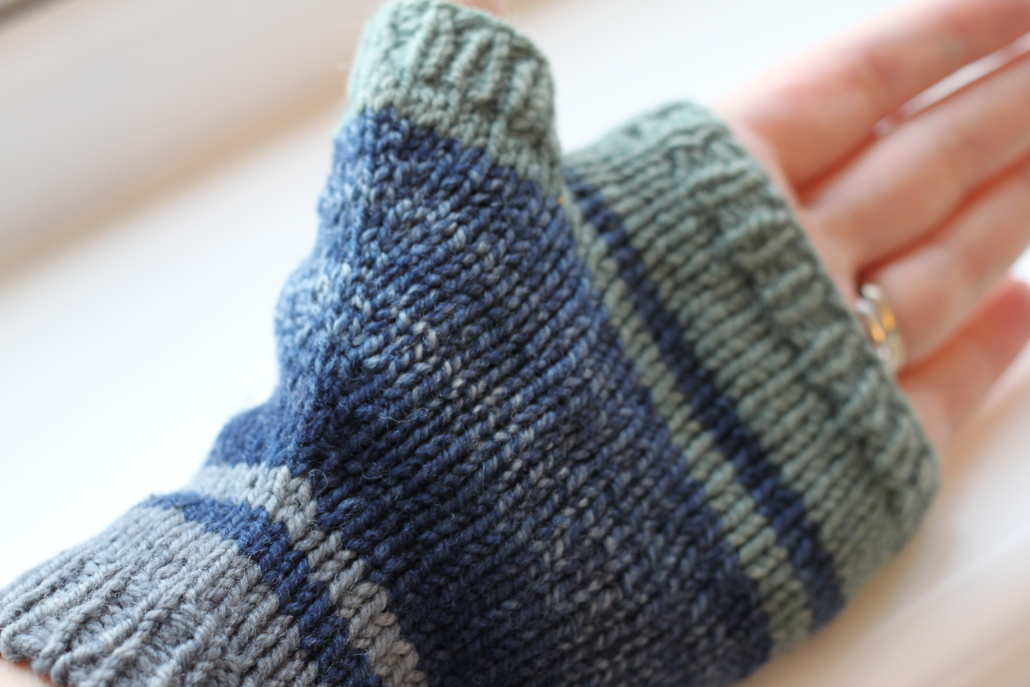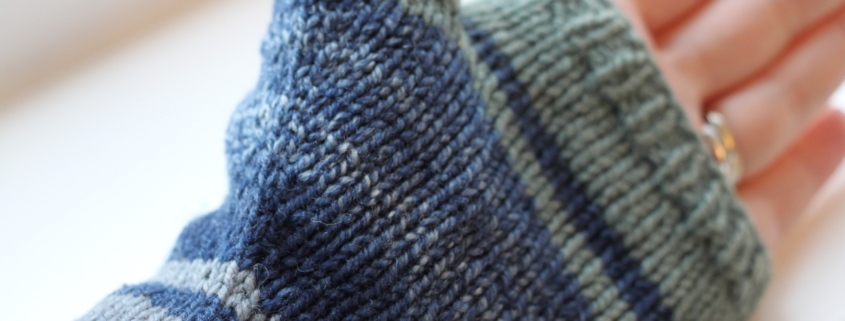Spinning for a Durable Pair of Mitts
words and photos by Rebecca Roy
Whenever spinners discuss making yarn that can stand up to a great deal of wear, it is usually in the context of socks. I often feel like making a confession … I have never finished knitting a pair of socks. It’s never interested me. Phew, I feel better now that I’ve got that off my chest. However, this does not mean I haven’t spun yarns with durability as my goal.
I love to wear fingerless mitts, and my mitts get a lot of wear. They are the perfect accessory for me in the damp and chill of Scottish winters (and autumns and springs for that matter). The frequent dampness combined with the friction of active use has meant that many of my mitts begin to full and pill quite badly. The biggest problem spots are where the thumb rubs against the palm and also the cuff where my tough rain jacket is constantly moving against the fabric. My mitts don’t get holes like socks do but most have ended up looking pretty rough after only one winter.
When I purchased some dyed Southdown from Hilltop Cloud back in 2018, I decided to put to the test the durability and resistance to fulling that the Down breeds are known for. I also figured the springy nature of the Southdown fibre could give me some good elasticity so the mitts would keep their shape after months of being yanked on and off. I hate when fingerless mitts get baggy around my fingers, don’t you?
The Southdown top was dyed as a set of 3 complimentary semisolids: navy, sage green, and grey. I decided to spin each colour on its own and use the 3 separate yarns in some kind of colourwork. I wanted a smooth, firm yarn with good elasticity, so I decided on a basic 3-ply with quite firm ply twist.
I spun all the singles and plied the yarn on my spindles during Tour de Fleece in 2018.

When spinning on my spindles, I monitor my twist by checking the plyback frequently as I wind on. My singles were about 28 WPI, and the plyback had a twist angle of about 30 degrees. When it came time to ply, I added extra twist and went past a “balanced” yarn. I could feel the extra energy pushing back against the spindle just a bit during the plying. The finished 3-ply has a twist angle of about 45 degrees, but the extra ply twist settled down in the finishing and the skeins hung open and relaxed. After a warm soak, the finished yarn puffed a bit and ended up as a very round springy yarn at 16 WPI. The yarn was a bit denser than my usual 3-ply as well; I got only 960 YPP, and I can feel the solid nature of the yarn.

This yarn is not soft nor does it drape. The skeins wouldn’t make you want to nuzzle them against your face. But it is perfect for its purpose. It is very springy and has a firm sponginess to it that resists compression. Its very firm roundness caused me to change my initial plans. I swatched a couple of stranded colourwork motifs, but the extra layer of floats at the back of the fabric was a bit uncomfortable. Each strand was so distinct and round that I could feel the floats against my skin, standing proud of the inner surface. I decided to mix the 3 colours with stripes instead. The finished mitts were very smooth, and the stitches looked crisp. They hugged my hands nicely, with no prickly feeling on the inside of my wrists.
So how have these mitts lasted through wear over the past 3 years? From time to time, a few small pills would show up on the edges, but these were easily picked away. I have worn these regularly in rain and shine, working in the garden, driving, playing in our paltry snow. There has been no fulling and no blurring of the stitches. The mitts still hug my wrists and they haven’t become floppy around the edges either. They look pretty much the same as when they came off the needles, and I expect they will for some years to come.

I would give most of the credit for these elastic and unflappable mitts to the Southdown fibre itself. Like all the classic Down breeds, the fibre really does stand up beautifully to friction and dampness without fulling. With a bit of extra twist, the yarn did exactly what I wanted it to do. Even though the knitting was a little uncomfortable due to the firmness of the yarn and the ribbing doesn’t look as neat as I would like, the fabric is just perfect for mittens: springy, hard-wearing, and ready for any weather year after year.
Becca Roy learned to spin on a spindle back in 2010 and was immediately entranced. A spindle is still her favourite fibre tool. She has been a member of the West of Scotland Guild for nearly as long. She lives near Glasgow, Scotland with her family. At the moment, her favourite yarn is anything tweedy but that will probably change any day.
PLY Magazine believes that Black lives matter, as well as LBGTQI+ lives. Those most vulnerable and persecuted in our communities deserve our love and support. Please be good to each other.
Did you know we also have a monthly PLY newsletter? Sign up here!
Did you know we also have a monthly PLY newsletter? Sign up here!

